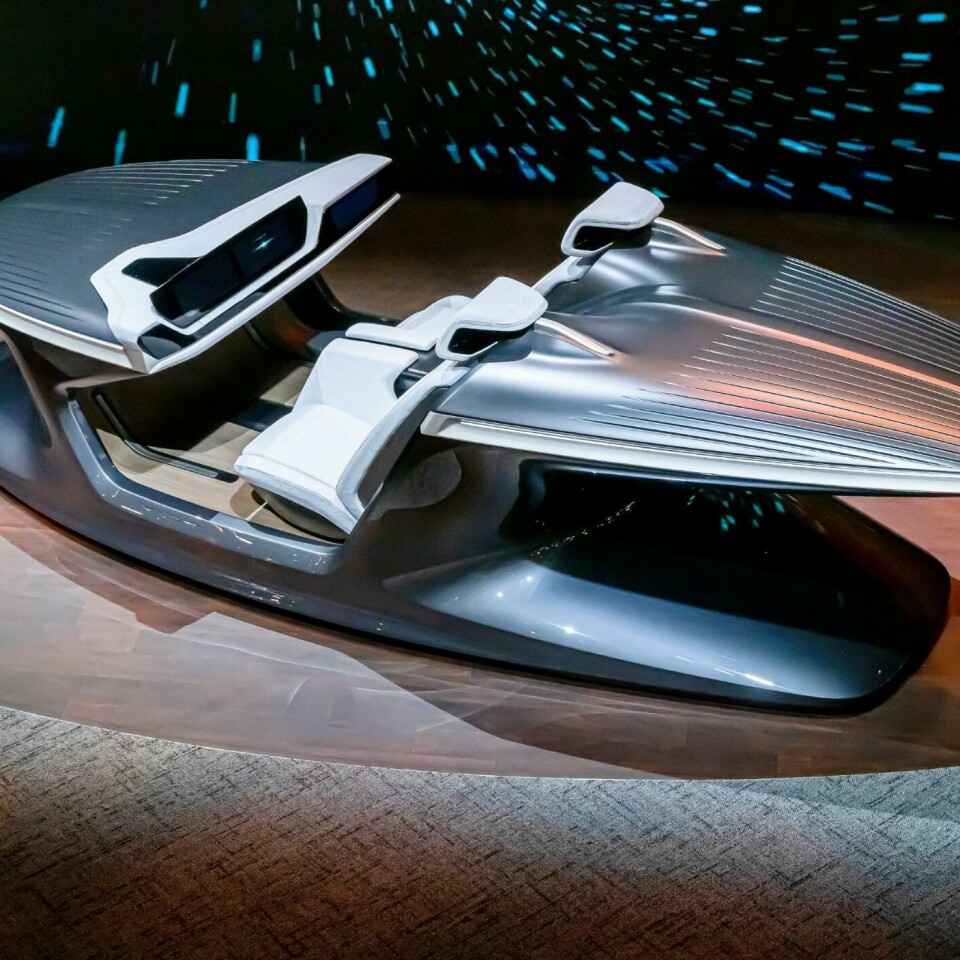
How will autonomous driving shape car design?
This month, Car Design News will be placing a spotlight on what autonomous driving means for car design. There are many different variables at play and it is very early days, but here are some of the key considerations
Autonomous driving presents some interesting challenges for the design community. They may in fact be opportunities – but that is still being figured out. This is true not only for the interior design teams who will be working on new seating arrangements, but also the exterior designers. Those new layouts might lend themselves to boxy shuttle-like exteriors to ferry groups of passengers around. Perhaps a long-distance cruiser is more sleek – or wacky in the case of Volkswagen’s Gen.Travel – owing to better aerodynamics and an interior that lets passengers stretch out and relax.
As with traditional car design, there will not be a one-size-fits-all AV exterior. For Fan Zhang, head of global design at GAC, the appeal of these kind of projects comes from the natural crossover with architecture. “In AV mode, the vehicle becomes a space on wheels. This means design will be different, more focussed on the interior,” he says. Designers may choose to focus more on the look of the space of “what you can do in the space,” he suggests.
It was about finding a balance of visibility for passengers, strength where needed and elegance
One thing that’s clear is AV exteriors will put visibility as a top priority (although you could argue this is already true with cars today.) Many concepts have showcased vast wraparound glasshouses, for example, which allow natural light to flood in and reduce the feeling of confinement. There is also the thought that reclining passengers can get an attractive panoramic view of the sky, rather than staring at the headlining. The AKXY2 pod, designed by Sage Automotive interiors and Kyoto-based design studio Fortmarei, has a huge dome-shaped roof that is described as a ‘canopy’ over the cockpit to create a sense of openness.
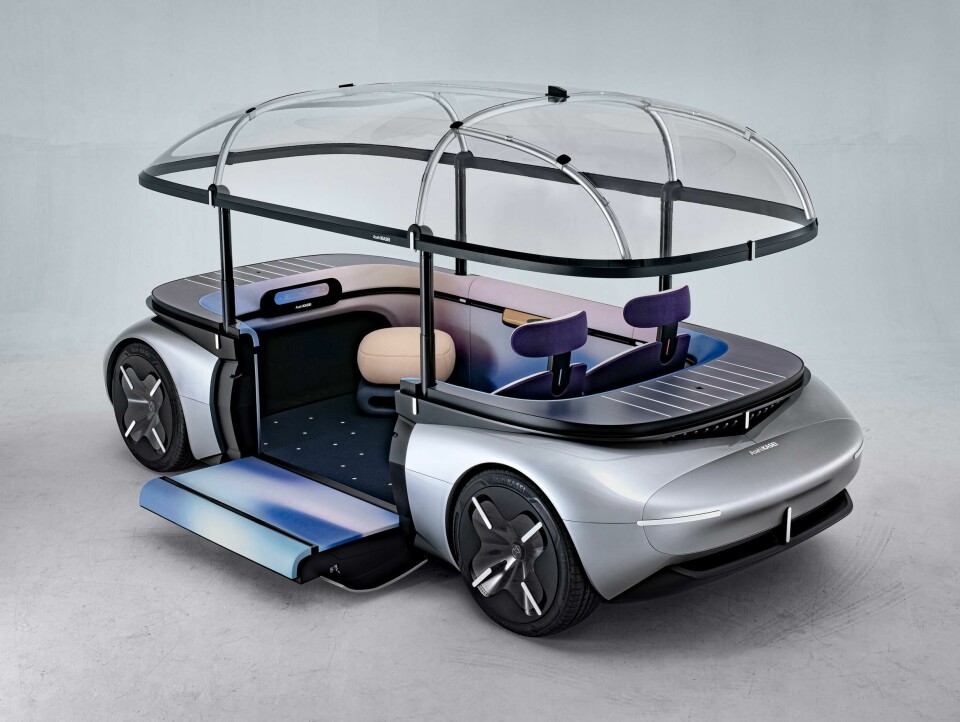
While this concept uses strong polycarbonate panels for the ‘glass’, some have cautioned that AVs must still be structurally sound and cannot do away with pillars altogether. Spanish design house Mormedi, for example, recently showcased the 101 concept which features a solid train cabin-like structure. “Engineering was pivotal… aesthetics came after to make sure it would be appropriate to be on the street,” says VP of design Blake McEldowney. “If it was made entirely of glass, it would never work. It was about finding a balance of visibility for passengers, strength where needed and elegance.”
Although the EV movement still faces pushback, it would not be a stretch to suggest that all autonomous vehicles will be electric (not necessarily the case for luxury private cars with autonomous capabilities.) Scalable skateboard platforms would seems sensible, in theory allowing the same base to support different vehicle configurations on top – be it private limousine, affordable driverless taxi or even a delivery van. In Mormedi’s case, there are power modules at the front and rear of the shuttle that can detach entirely, meaning the floor of the cockpit is lower – and headroom higher – than in a traditional EV.
And of course, ingress and egress opens itself up for exploration if seats are in different spots and switchgear is no longer in the way. Gullwing doors appear to be a popular direction, showcased by both the VW Gen.Travel and GAC’s sleek Space concept. If the promises of autonomous vehicle companies ring true, these shuttles will be more accessible to those with disabilities, more inclusive to all riders. This will surely influence design away from traditional hinged doors and narrow openings.
The implications for design will vary massively depending on the vehicle’s intended use
Autonomous vehicles will also need to be courteous. A smile, nod or wave from behind the wheel can inform other drivers and pedestrians that they are free to pass or cross the road – but with no ‘driver’ it’s down to the car to do that. How will the exterior be designed in a way to handle these interactions? It is looking likely that lighting is the answer, with standardised or at least intuitive animations shown on external displays. How these are integrated within the overall exterior design could prove interesting.
Perhaps the most significant area of development is around UX/UI and HMI (will we see a consolidation of those acronyms?) as the act of driving a car becomes delegated to a computer. In the near term, shared automation requires the car to clearly outline its intentions and physical limitations in real time.
Drivers need to know if a bend in the road ahead is too tight for the car to manage. Has the car recognised that stranded car up ahead – will it brake in time? Even basic driver assistance functions still present headaches on this front, so there will need to be some improvements when it comes to the human-vehicle interaction. Are today’s beeps and flashing icons on the screen enough?
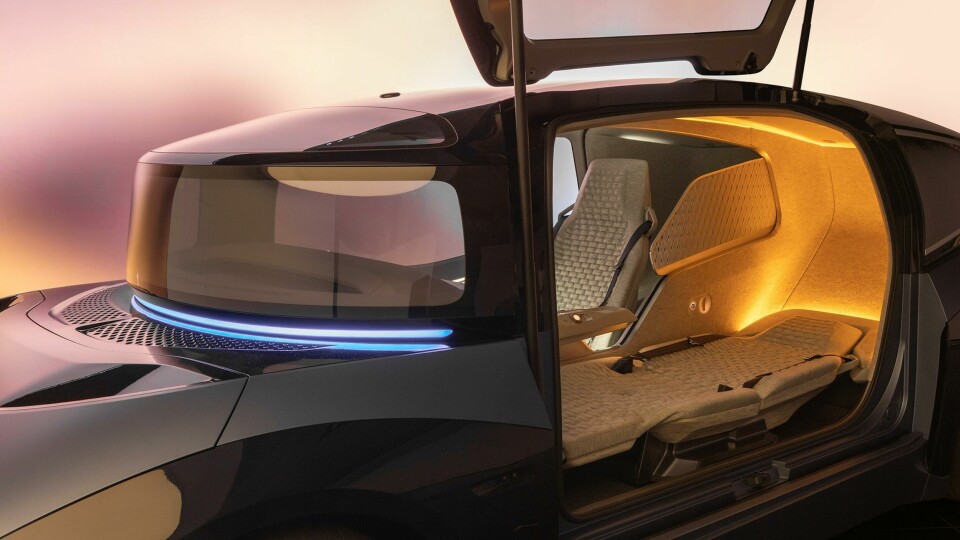
More serious levels of automation (SAE Level 4 and 5) will amplify the importance of crystal-clear HMI. The vision is often presented of passengers drifting peacefully to sleep while the car does the work – but that will never happen unless they have full trust in the system.
Traditional displays, dials and toggles will need to work in tandem with ambient lighting, audio and haptic feedback to get the message across that everything is under control. Some even predict that certain scents could be used to supplement the experience, perhaps not the most efficient in terms of an emergency alert, but more in terms of creating an atmosphere that helps passengers relax or wake up.
With AVs it can be about accentuating the in-cabin experience
Scott King, director at creative agency Full Fathom, foresees a similar experience to that of an airline. “We know if the interior of a vehicle was bathed in certain colours, that could either stimulate or encourage relaxation,” he explains. “You can almost deliver different bespoke sensory environments that are in tune with different driving modes. With AVs it can be about accentuating the in-cabin experience for everyone – because there isn’t a driver who needs to stay alert.”
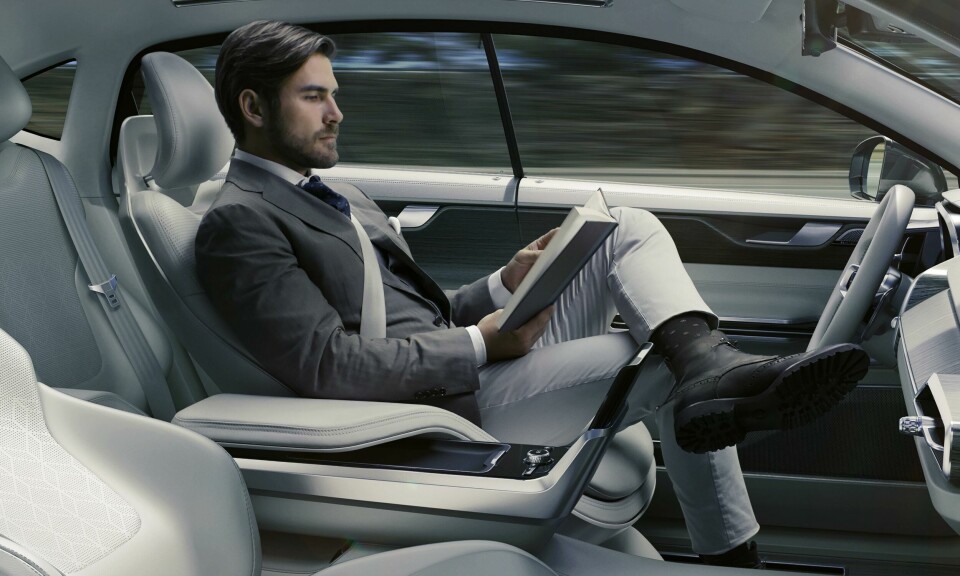
Oftentimes, there is not a full-blown concept car but a stationary interior mock-up. Many of these have been revealed in recent years, from the Volvo Concept 26 revealed back in 2015 to Chrysler’s Synthesis concept shown at this year’s CES.
While the former features a retractable steering wheel, Chrysler’s latest concept does not actually show a steering wheel at all. Although puzzlingly, it is designed around Level 3 automation by which the driver should generally be in control in all situations outside of a traffic jam. A short film shows how the ‘driver’ can take video calls on the go and use the widescreen ahead of them for entertainment. Concepts like these are useful thought experiments while the legality of autonomous driving is debated.
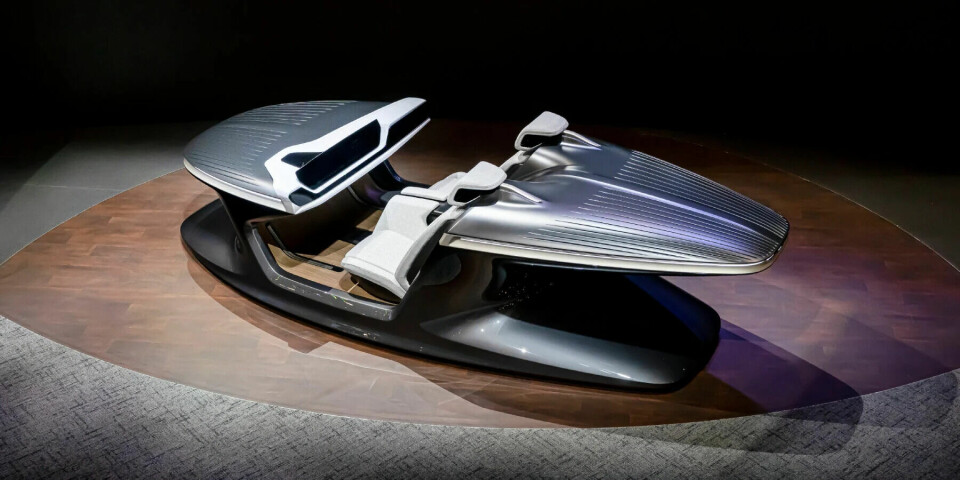
All this highlights an important distinction: there is driverless, and autonomous-capable. The former gives no option for human control, while the latter may share the driving task with a human.
Clearly, there are very different usage scenarios at play here – think city bus versus luxury sedan – and so the implications for design will vary massively depending on the vehicle’s intended use. This will also shape the decisions being made by CMF teams – a shared robotaxi will need durable, easily cleaned and smell resistant materials (which also look good). A luxury coupe with autonomous driving mode might be more conventional by comparison, although real estate taken up by screens may instead be upholstered.
A wider question remains: are designers excited about working on autonomous cars? Ask ten designers and you’d probably get ten different answers. Given AVs are likely to diverge so heavily from the norm, it is unclear whether such projects are approached with genuine vim or reluctant acceptance.
“When it’s a pure concept, it’s fun – it’s like working on a spaceship,” says Stephane Janin, who leads GAC’s new design studio in Milan. “But when the realities set in, some projects can become more of a challenge and maybe less exciting.” Janin’s point is that an AV can be fun to design on paper and in the workshop, but to be production-friendly they must be affordable, easy to maintain and robust – hardly elements that get most designers up in the morning.
That being said, design is a field that is driven not only by beauty but also functionality, accessibility and sustainability. While autonomous vehicles might be a hard sell at first, there is every likelihood that the next wave of designers – not only in car design but product, interiors and UX – will have a new playground in autonomous vehicles.
























